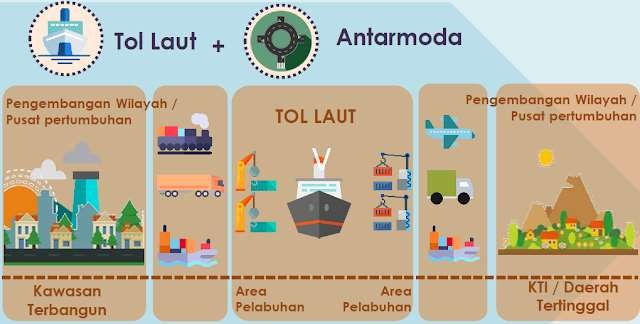Application of Sea Toll as a Means to Maintain the Availability of Goods in the 3T Area (Lagging, Frontier and Outermost)
Main Article Content
Abstract
Public Service Obligation (PSO) is the implementation of public services used by each country to mandate operators regarding minimum service standards, especially for remote areas where the output is expected to be increased and developed every year. Indonesia as an archipelagic country builds connectivity that can be adequate and can improve economic balance and welfare for the surrounding ecological community. The Sea Toll Program is designed so that each region can be connected between regions in Indonesia with adequate schedules and infrastructure, especially in areas that are still 3 T (Lagging, Frontier and Outermost). This study aims to describe the role of the Sea Toll from the government in designing and maintaining the availability of goods in the 3T area. The research method used is qualitative with a descriptive research approach, which is to say solving the current problems based on data that occurs in the field. So the implementation of sea tolls starting from 2015 to 2022 experiences a positive trend because from year to year it is seen that Indonesia has made a policy to realize an even logistics system by developing shipping networks to the periphery.
Downloads
Article Details

This work is licensed under a Creative Commons Attribution 4.0 International License.
References
Bovis, Jenis Subsidi Negara. 2005.
Kadarisman, Tol Laut. 2016.
B. Nasional and P. Perbatasan, “Kehadiran Tol Laut dalam Mendukung Distribusi Logistik untuk Daerah Kawasan Perbatasan.” 2022.
K. D. Negeri, “Dukungan Kementerian dalam Negeri dan Peran serta Pemerintah Daerah dalam Optimalisasi Penyelenggaraan Tol Laut.” 2022.
et. al Özpeynirci, “Struktur Geografis,” 2012.
Neraca, “Aktivitas Distribusi Barang,” 2014.
D. D. Andilas and L. A. Yanggana, “Pelaksanaan Program Tol Laut PT Pelayaran Nasional Indonesia,” J. Manaj. Transp. Dan Logistik, vol. 4, no. 1, p. 1, 2017, doi: 10.25292/j.mtl.v4i1.36.
K. Logistik, “Program Tol Laut Indonesia dalam Mendukung Poros Maritim Dunia,” https://www.kapaldanlogistik.com/2021/11/program-tol-laut-indonesia.html#comments, 2021.
K. Perhubungan, “Sistem Informasi Tol Laut,” https://sitolaut.dephub.go.id/login, 2022.
BRI, “BRI Store,” https://bristore.id/, 2022.
K. Perdagangan, “Trayek Tol Laut 2022,” http://geraimaritim.kemendag.go.id/trayek, 2022.
K. Perhubungan, “Penetapan Jaringan Trayek Penyelenggaraan Kewajiban Pelayanan Publik untuk Angkutan Barang Di Laut Tahun Anggaran 2022,” 2022.

